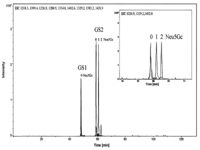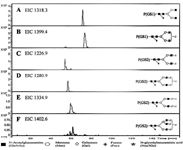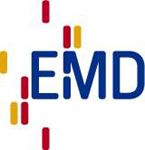Glycosylation Analysis by Dedicated Sample Preparation and Complementary nano-LC (HILIC/RP)/ESI-MS
Site-specific analysis of protein glycosylation has become a very important issue in pharmaceutical/biotech industries, requiring specific analytical tools and methodologies.
Jessica Wohlgemuth1, Wen Jiang2, Egidijus Machtejevas1, and Sven Andrecht1,
1Merck KGaA, Darmstadt, Germany and 2Merck SeQuant AB, Umea, Sweden
Site-specific analysis of protein glycosylation has become a very important issue in pharmaceutical/biotech industries, requiring specific analytical tools and methodologies. Common techniques for glycosylation analysis on the peptide level use LC–MS. However, analysis is challenging due to low abundance of glycopeptides in complex protein digests. Improved chromatographic resolution and detection of low abundant glycoforms was achieved through complementary HILIC- and RP-LC coupled to MS after quantitative enrichment of N- and O-glycopeptides.
Experimental
IgG was digested with trypsin and enriched using the ProteoExtract® Glycopeptide Enrichment Kit (PN#72103, EMD Chemicals Inc.). LC-ESI-MS analysis was performed using an UltiMate 3000 HPLC (Dionex GmbH) equipped with either Chromolith® CapRod® RP-18e HR monolithic silica capillaries (150 × 0.1 mm, Merck KGaA, Germany) or 300 × 0.1 mm ZIC®-HILIC modified monolithic silica capillaries (research sample, Merck-SeQuant AB, Sweden) coupled to an Esquire 3000 Plus™ ion trap MS (Bruker Daltonics Inc.) operated in positive ion mode.

Figure 1: Separation by peptide sequence and degree of sialylation. Glycopeptides of an mAb with two glycosylation sites (GS) were enriched and analyzed by nano-LC-ESI-MS using a Chromolith® CapRod® RP-18e HR monolithic silica capillary (150 à 0.1 mm) at 500 nL/min. Gradient: 2%â32% ACN (+ 0.1% FA) in 90 min. (Adapted from J.Sep.Sci., 33, 2010.)
Results
ZIC® Glycocapture Resin allows for specific and quantitative enrichment of N- and O-linked glycopeptides without preference for particular glycan structures or information loss. RP-18 and ZIC®-HILIC chromatography are orthogonal and complementary for separation of glycopeptides. RP-18 facilitated the separation by peptide sequence and degree of sialylation whereas a separation by the composition of glycan moiety was facilitated by ZIC®-HILIC. Furthermore, ZIC®-HILIC separation of glycopeptides can be efficiently tuned by altered solvent conditions (e.g., ± salt or FA). The use of both stationary phases in LC–MS setups results in the detection of low abundant glycoforms, which cannot be identified if only one stationary phase is employed.

Figure 2: Separation by composition of glycan moiety. Glycopeptides of an mAb with two glycosylation sites (GS) were enriched and analyzed by nano-LC-ESI-MS using a ZIC®-HILIC monolithic silica capillary (300 à 0.1 mm), flow rate 500 nL/min. Gradient: 80%â50% ACN (+ 0.1% FA) in 130 min. (Adapted from J.Sep.Sci., 33, 2010.)
Conclusion
The combination of all described methods enables detection of low abundant and new glycoforms and delivers deeper insight into site-specific protein glycosylation.
Reference
(1) J. Wohlgemuth et. al., J.Sep.Sci. 2010 Mar 10; 33(6–7):880–890.

EMD Chemicals Inc., An Affiliate of Merck KGaA
480 South Democrat Road, Gibbstown, NJ 08027
tel. (800) 222-0342; fax (856) 423-4389
Website: www.emdchemicals.com/chromatography

Assessing Thorium-Peptide Interactions Using Hydrophilic Interaction Liquid Chromatography
February 4th 2025Paris-Saclay University scientists used hydrophilic interaction liquid chromatography (HILIC) coupled to electrospray ionization mass spectrometry (ESI-MS) and inductively coupled plasma mass spectrometry (ICP-MS) to assess thorium’s interaction with peptides.

.png&w=3840&q=75)

.png&w=3840&q=75)



.png&w=3840&q=75)



.png&w=3840&q=75)















